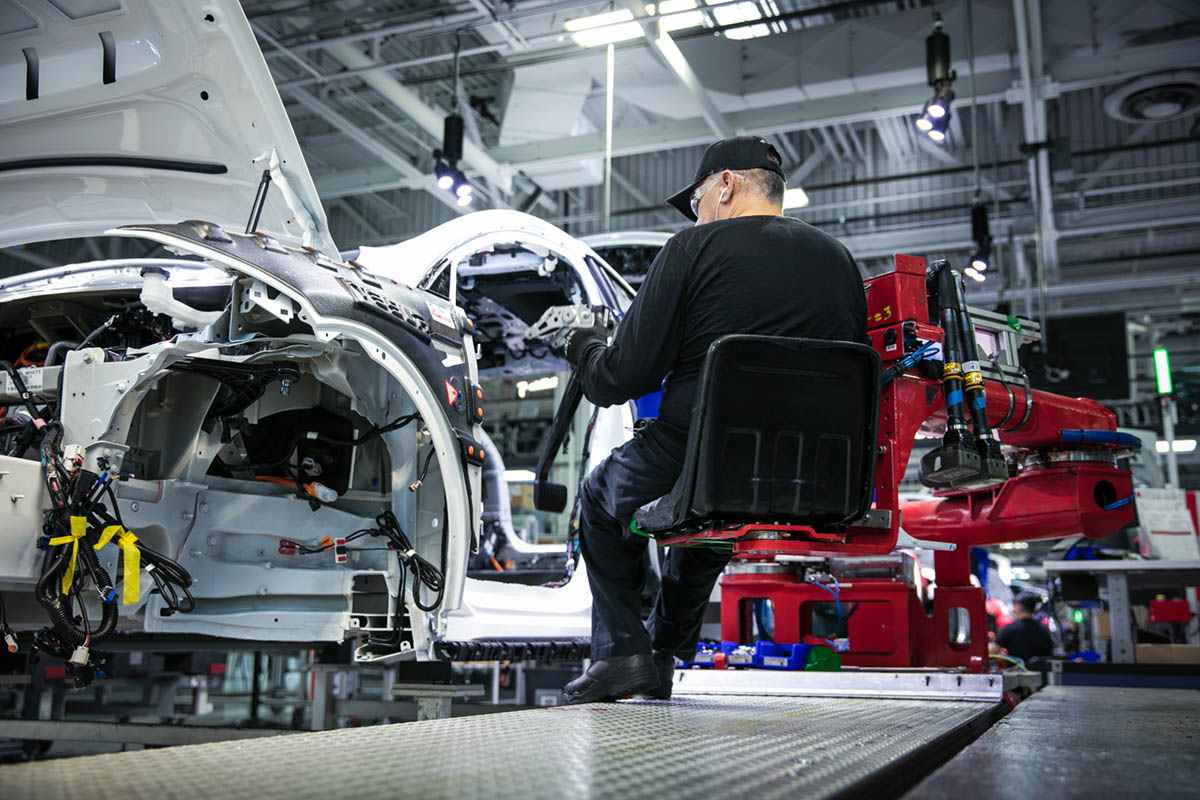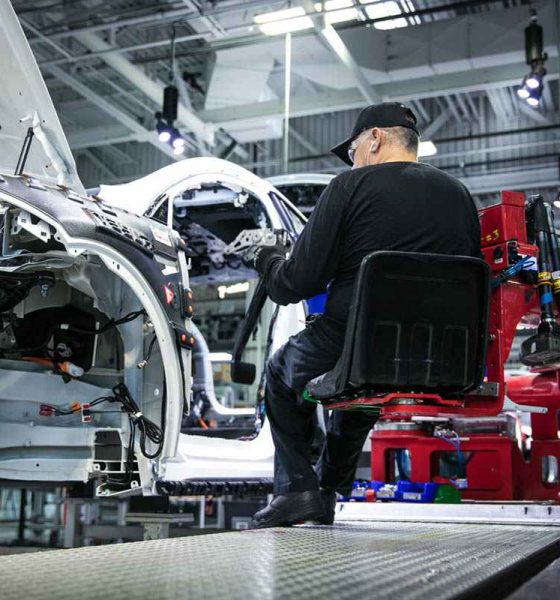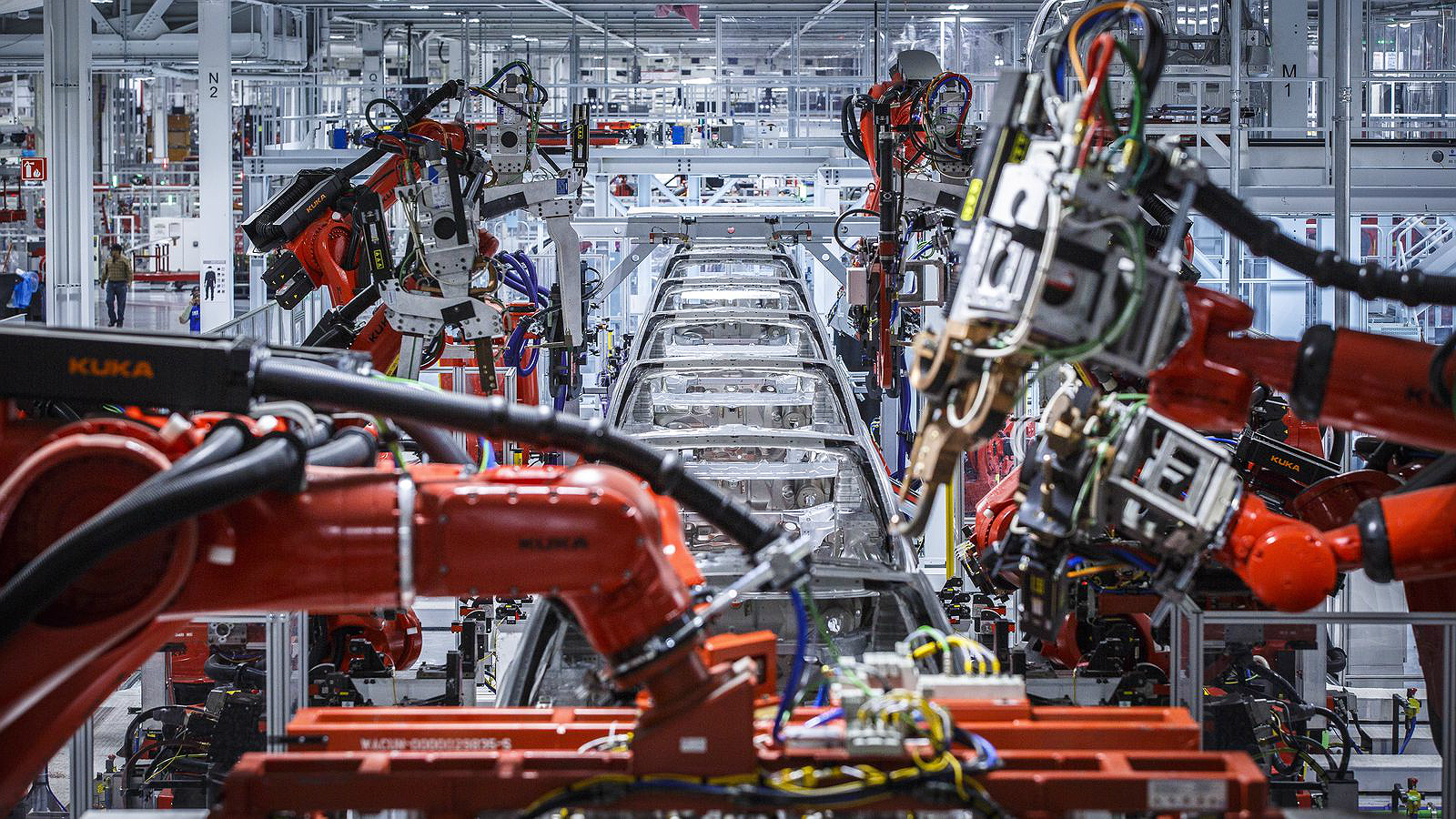

News
Tesla’s health clinic surgeon explains practice amid Reveal’s new allegations
Last Monday, an expose was published accusing Tesla of intentionally ignoring workers’ injuries. Citing former employees and a physician assistant who briefly worked in the company’s health clinic at the Fremont factory, Reveal, a publication that prides itself with its investigative reporting, accused Tesla of withholding medical care to its workers, to minimize how many injuries the company includes in its official records.
The new expose is not the first time Reveal trained its sights on the electric car maker. Earlier this year, the publication, based on accounts from former employees, accused Tesla of misreporting injury rates and ignoring safety concerns due to the whims of executives like Elon Musk. The publication’s allegations ultimately resulted in an investigation by the CAL-OSHA, which lasted four months. As noted by VP for Environmental, Health and Safety (EHS) Laurie Shelby during the third quarter earnings call and in a following blog post in Tesla’s official website, the CAL-OSHA investigation found no misreporting on Tesla’s part. The CAL-OSHA did find one safety issue and one record-keeping error during its four month-long investigation, in the form of an extension cord that was categorized as a trip hazard and an injury log that had an incorrect date.
Apart from doubling down on previous allegations — such as Tesla’s factories lacking hazard signs due to Elon Musk’s dislike of the color yellow — Reveal‘s new expose, written by journalist Will Evans, related several accounts of workers being denied proper medical care. One such instance involved a worker who severed the top of a finger being sent to the emergency room in a Lyft, as well as an employee who was asked to report to work even after being injured in the Model X line. The publication also alleged that Tesla forbids employees to call 911 without a doctor’s permission. Former PA Anna Watson, who worked in Tesla’s Fremont health clinic for about three weeks, noted that Tesla’s employees are paying the price for the company’s unsafe practices. Watson further alleged that she was terminated by Access Omnicare after raising safety concerns.
“The goal of the clinic was to keep as many patients off of the books as possible. The way they were implementing it was very out of control. Every company that I’ve worked at is motivated to keep things not recordable. But I’ve never seen anybody do it at the expense of treating the patient,” she said.
The publication’s new allegations have emerged as a dark cloud hovering over Tesla’s revamped workers’ safety programs, which have been at the forefront of the company as it continues to ramp its operations. Since hiring VP for Environmental, Health and Safety (EHS) Laurie Shelby last year, Tesla has actively rolled out new initiatives to raise the level of safety for its facilities’ amidst the company’s ever-increasing number of workers. Shelby, for one, has noted that Tesla remains focused on its efforts to become the safest car factory in the world.
Tesla is yet to respond to Reveal‘s new report, though a spokesperson from the company noted that Watson completed a total of five shifts before her employment was terminated. Dr. Basil Besh, an orthopedic surgeon and founder of Access Omnicare, has also issued a statement explaining the company’s practices when dealing with workers’ injuries. Besh, who currently serves as the chair of the American Academy of Orthopaedic Surgeons (AAOS) Board of Councilors (BOC), noted that the care that Access Omnicare gives to Tesla’s employees is the same care he gives to his personal clientele. The orthopedic surgeon noted that he had spoken to Reveal journalist Will Evans about the safety practices in the Fremont factory.
“I spent nearly one hour with Reveal detailing Tesla’s decision earlier this year to bring me and my medical team on site at Fremont, providing its employees with state-of-the-art occupational and musculoskeletal health care. I detailed our vision for exemplary patient care, and I gave specific examples of protocol improvements and subsequent successes in outcomes in only four short months, including accurate diagnoses and reducing needless delays for advanced testing and treatment. I patiently educated Will Evans on how Tesla allowed me to give the same care to Tesla employees that I do to my private patients including ones who are professional athletes, with the ability to get necessary testing and treatment in a timely manner without being hindered by an often cumbersome California Worker’s Compensation System that sometimes negatively effects injured workers.”

Dr. Besh further noted that different types of injuries require different types of immediate care. The medical professional also denies that any malpractice is ongoing in the Tesla factory.
“I counseled Will on the difference between subjective complaints of pain, which cannot be proven and are often magnified, and objective signs found only on careful clinical examination by an experienced physician. I even mailed Will a copy of a relevant chapter from the American Medical Association Return to Work Guidelines and offered to make myself available for additional questions. Research and evidence-based medicine indicate that deconditioning injuries involving sore muscles should not be treated with inactivity as this only exacerbates the problem, but should instead be treated by proactive conditioning, ergonomic modifications, and supportive care. Not all patients in pain should be off work, at home, and on opioids. In fact, it is most often in these patients’ best interest to have supportive care that enhances their activity, their function, and their well-being.
“As a physician, my foremost obligation is to perform a careful history and physical examination, order additional tests when clinically indicated, make an accurate diagnosis, and deliver the absolute best care possible. If patients are injured, and continued work presents safety issues for the patient, myself and my fellow physicians prescribe the appropriate work restrictions. Any suggestion that myself or any of my medical team at AOC allow external factors to influence our medical care in any way is false and inaccurate.”
Ultimately, Dr. Besh also pointed out that ambulances are reserved for life or limb-threatening injuries. The surgeon did not provide a direct comment about former physician assistant Anna Watson, due to the latter being the subject of an ongoing investigation by the California Medical Board.
“Rather than deliver an informative and balanced piece of journalism, Reveal has instead chosen to hitch its wagon to Ms. Anna Watson, a provider with whom we severed ties after less than two weeks at our clinic and about whom I cannot provide any additional comment as she is currently the subject of an investigation by the California Medical Board. Instead of highlighting the tremendous progress being made in both patient safety and patient care at Tesla, this report uses poor sourcing to tell a story consistent with a predetermined agenda,” Dr. Besh stated.

Elon Musk
Elon Musk and Tesla AI Director share insights after empty driver seat Robotaxi rides
The executives’ unoccupied tests hint at the rapid progress of Tesla’s unsupervised Robotaxi efforts.

Tesla CEO Elon Musk and AI Director Ashok Elluswamy celebrated Christmas Eve by sharing personal experiences with Robotaxi vehicles that had no safety monitor or occupant in the driver’s seat. Musk described the system’s “perfect driving” around Austin, while Elluswamy posted video from the back seat, calling it “an amazing experience.”
The executives’ unoccupied tests hint at the rapid progress of Tesla’s unsupervised Robotaxi efforts.
Elon and Ashok’s firsthand Robotaxi insights
Prior to Musk and the Tesla AI Director’s posts, sightings of unmanned Teslas navigating public roads were widely shared on social media. One such vehicle was spotted in Austin, Texas, which Elon Musk acknowleged by stating that “Testing is underway with no occupants in the car.”
Based on his Christmas Eve post, Musk seemed to have tested an unmanned Tesla himself. “A Tesla with no safety monitor in the car and me sitting in the passenger seat took me all around Austin on Sunday with perfect driving,” Musk wrote in his post.
Elluswamy responded with a 2-minute video showing himself in the rear of an unmanned Tesla. The video featured the vehicle’s empty front seats, as well as its smooth handling through real-world traffic. He captioned his video with the words, “It’s an amazing experience!”
Towards Unsupervised operations
During an xAI Hackathon earlier this month, Elon Musk mentioned that Tesla owed be removing Safety Monitors from its Robotaxis in Austin in just three weeks. “Unsupervised is pretty much solved at this point. So there will be Tesla Robotaxis operating in Austin with no one in them. Not even anyone in the passenger seat in about three weeks,” he said. Musk echoed similar estimates at the 2025 Annual Shareholder Meeting and the Q3 2025 earnings call.
Considering the insights that were posted Musk and Elluswamy, it does appear that Tesla is working hard towards operating its Robotaxis with no safety monitors. This is quite impressive considering that the service was launched just earlier this year.
Elon Musk
Starlink passes 9 million active customers just weeks after hitting 8 million
The milestone highlights the accelerating growth of Starlink, which has now been adding over 20,000 new users per day.

SpaceX’s Starlink satellite internet service has continued its rapid global expansion, surpassing 9 million active customers just weeks after crossing the 8 million mark.
The milestone highlights the accelerating growth of Starlink, which has now been adding over 20,000 new users per day.
9 million customers
In a post on X, SpaceX stated that Starlink now serves over 9 million active users across 155 countries, territories, and markets. The company reached 8 million customers in early November, meaning it added roughly 1 million subscribers in under seven weeks, or about 21,275 new users on average per day.
“Starlink is connecting more than 9M active customers with high-speed internet across 155 countries, territories, and many other markets,” Starlink wrote in a post on its official X account. SpaceX President Gwynne Shotwell also celebrated the milestone on X. “A huge thank you to all of our customers and congrats to the Starlink team for such an incredible product,” she wrote.
That growth rate reflects both rising demand for broadband in underserved regions and Starlink’s expanding satellite constellation, which now includes more than 9,000 low-Earth-orbit satellites designed to deliver high-speed, low-latency internet worldwide.
Starlink’s momentum
Starlink’s momentum has been building up. SpaceX reported 4.6 million Starlink customers in December 2024, followed by 7 million by August 2025, and 8 million customers in November. Independent data also suggests Starlink usage is rising sharply, with Cloudflare reporting that global web traffic from Starlink users more than doubled in 2025, as noted in an Insider report.
Starlink’s momentum is increasingly tied to SpaceX’s broader financial outlook. Elon Musk has said the satellite network is “by far” the company’s largest revenue driver, and reports suggest SpaceX may be positioning itself for an initial public offering as soon as next year, with valuations estimated as high as $1.5 trillion. Musk has also suggested in the past that Starlink could have its own IPO in the future.
News
NVIDIA Director of Robotics: Tesla FSD v14 is the first AI to pass the “Physical Turing Test”
After testing FSD v14, Fan stated that his experience with FSD felt magical at first, but it soon started to feel like a routine.

NVIDIA Director of Robotics Jim Fan has praised Tesla’s Full Self-Driving (Supervised) v14 as the first AI to pass what he described as a “Physical Turing Test.”
After testing FSD v14, Fan stated that his experience with FSD felt magical at first, but it soon started to feel like a routine. And just like smartphones today, removing it now would “actively hurt.”
Jim Fan’s hands-on FSD v14 impressions
Fan, a leading researcher in embodied AI who is currently solving Physical AI at NVIDIA and spearheading the company’s Project GR00T initiative, noted that he actually was late to the Tesla game. He was, however, one of the first to try out FSD v14.
“I was very late to own a Tesla but among the earliest to try out FSD v14. It’s perhaps the first time I experience an AI that passes the Physical Turing Test: after a long day at work, you press a button, lay back, and couldn’t tell if a neural net or a human drove you home,” Fan wrote in a post on X.
Fan added: “Despite knowing exactly how robot learning works, I still find it magical watching the steering wheel turn by itself. First it feels surreal, next it becomes routine. Then, like the smartphone, taking it away actively hurts. This is how humanity gets rewired and glued to god-like technologies.”
The Physical Turing Test
The original Turing Test was conceived by Alan Turing in 1950, and it was aimed at determining if a machine could exhibit behavior that is equivalent to or indistinguishable from a human. By focusing on text-based conversations, the original Turing Test set a high bar for natural language processing and machine learning.
This test has been passed by today’s large language models. However, the capability to converse in a humanlike manner is a completely different challenge from performing real-world problem-solving or physical interactions. Thus, Fan introduced the Physical Turing Test, which challenges AI systems to demonstrate intelligence through physical actions.
Based on Fan’s comments, Tesla has demonstrated these intelligent physical actions with FSD v14. Elon Musk agreed with the NVIDIA executive, stating in a post on X that with FSD v14, “you can sense the sentience maturing.” Musk also praised Tesla AI, calling it the best “real-world AI” today.








